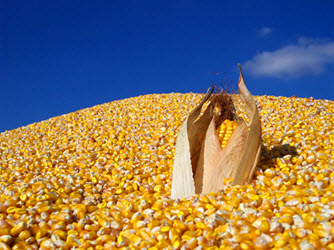THE OPEN
March beans: 1 lower
March meal: .40 higher
March soyoil: 11 lower
March corn: 1 3/4 lower
March wheat: 1/2 higher
Prices opened as expected with traders back to buying beans and selling corn. Short-covering in soyoil stabilized bean trade, which saw strength from the start of the trading session. One corn specific headline involved China suspending its national ethanol mandate, which suggests they may not import ethanol to blend in the new trade deal. Beans continue to see support from the signing of the deal on Jan 15, an expected bullish USDA report, and future possible Chinese purchases. Funds are an estimated net short 8K contracts of beans, 20K meal, and 90K corn, while maintaining over a 100K soyoil long and modest wheat position of 20K.
SOY
- The bean and soyoil markets held their lows and put in a good rally at the start of the trading session.
- Oilshare continues to be an important 2020 story as biofuel demand and higher crude oil prices fed into higher oilshare price action for the start of the session.
- Technically speaking, March soyoil once again printed a low near the 3440c level, which for today created more upward pressure as new soyoil shorts covered and new bulls opted in.
- Later in the session, a bearish EIA crude oil report and Trump White House remarks broke crude, which created a choppy soyoil trading session as well.
- March meal maintained a muted trade, traveling just above the $300.00 level of key support.
- March crush traded back under 1.00c/bu to 96.88c/bu, while oilshare moved higher to 36.57%.
- March beans continue to trade sideways, walking back and testing $9.38, a level now viewed as more of a short-covering opportunity given sideways chart price action.
- Bean spreads firmed with July/Nov trading into 2 1/4c from 4 3/4c, vs. meal spreads that were weaker. March/May meal moved out to $4.40 from $4.00.
GRAINS
- Corn continued its slow grind lower, with traders continuing to hold a small short position vs. even beans heading into the report on Friday.
- Traders continue to worry about the pace of corn exports, and demand moving forward.
- The EIA report came in bearish for ethanol as well, with production slipping a bit lower, and a large build in stocks. Production was down 0.4% WOW, to a 1.062 mln bbl/day rate, which would utilize just over 5.5 bln bu of corn.
- Corn continued as the sell leg of many spreads, including wheat.
- March wheat/corn traded up to 1.70 3/4c as traders added to wheat length. Good support was once again noted at $5.50 March wheat, which may once again be the lower level in a trading range from $5.50 to $5.65.
- KC wheat was higher as well, as short-covering took place in a market that is ruled by bears.
- Spreads were slightly firmer, with July/Dec corn trading into 2c from 2 3/4c, though March/May wheat was trading from 2 3/4c out to 3 1/2c.
AT 12:00 THE MARKETS ARE AS FOLLOWS:
HI LO
March beans: 3 higher 9.49 3/4 9.38
March meal: .30 higher 303.20 300.40
March soyoil: 10 lower 3506 3447
March corn: 1/2 lower 3.84 1/4 3.82 1/4
March wheat: 3 higher 5.55 3/4 5.45 1/4
March canola: 1.90 higher 482.50 477.60
OUTSIDE MARKETS
The Dow opened down 43 pts but after Trump spoke stocks rallied and were up over 100 pts. Crude oil broke to $59.70/barrel, while the US dollar firmed to 97.28.
CLOSING COMMENTS
The USDA is going to guide the markets post Friday, but would look for a continued price pattern of corn continuing on as the sell leg of most spreads as it is clear that funds will enter the report more bearish corn than bullish beans. Expectations are for yield/production cuts, so the market needs a larger than expected bullish surprise to sustain itself at current highs. Funds could actually sell corn into the report and cover post data, a move not unusual over the last year.
As far as the report goes, probably the number most important for corn is production. Right now, the advertised estimated guess for production is 13.5 bln bu vs. 13.6 bln bu in the Nov. estimate. Harvested acres are estimated at 81.35 mln, with yield expected to be slightly lower at 166.2 bpa vs. 167.0 bpa in Nov. Therefore, the corn market needs a much lower number to move prices higher and to the upside of current ranges. The export pace may be the deal breaker for higher trade, as carry-out may be impacted by the continuing lag of exports over the past year.
For soybeans, the focus may be on the Dec 1 stocks number, with the average advertised guess at 3.1 bln bu vs. 3.7 bln bu year ago. Carry-out has been moving lower, and the USDA is going to have to come to terms with ideas of normal trade between China and the US. That does not leave much of a cushion with ending stocks around 450 mln bu, give or take a few. So, it's not much of a stretch to see beans supported against corn, and why funds may not want to sell into the data.
TAGS – Feed Grains, Soy & Oilseeds, Wheat, North America


 Wheat remains the star of the ag commodity space this week with the rally continuing on challenging weather prospects for the U.S. HRW region, Europe, and the Black Sea. Until a few weeks ago, there were few doubts about the 2024 crop being able to supply the expected demand, but now reduced yi...
Wheat remains the star of the ag commodity space this week with the rally continuing on challenging weather prospects for the U.S. HRW region, Europe, and the Black Sea. Until a few weeks ago, there were few doubts about the 2024 crop being able to supply the expected demand, but now reduced yi...
 Most Apparent Solution The EU’s organic sector wants the bloc’s officials to take more action to ensure they achieve the target of 25 percent of agricultural output being organic by 2030. Specifically, they want a campaign to increase consumer demand for organic food so that organic...
Most Apparent Solution The EU’s organic sector wants the bloc’s officials to take more action to ensure they achieve the target of 25 percent of agricultural output being organic by 2030. Specifically, they want a campaign to increase consumer demand for organic food so that organic...
 Yesterday, the Animal and Plant Health Inspection Service (APHIS) issued a federal order requiring testing and reporting of highly pathogenic avian influenza (HPAI) for the interstate movement of lactating dairy cattle. Specific guidance will be issued at some point today, and the order will go...
Yesterday, the Animal and Plant Health Inspection Service (APHIS) issued a federal order requiring testing and reporting of highly pathogenic avian influenza (HPAI) for the interstate movement of lactating dairy cattle. Specific guidance will be issued at some point today, and the order will go...